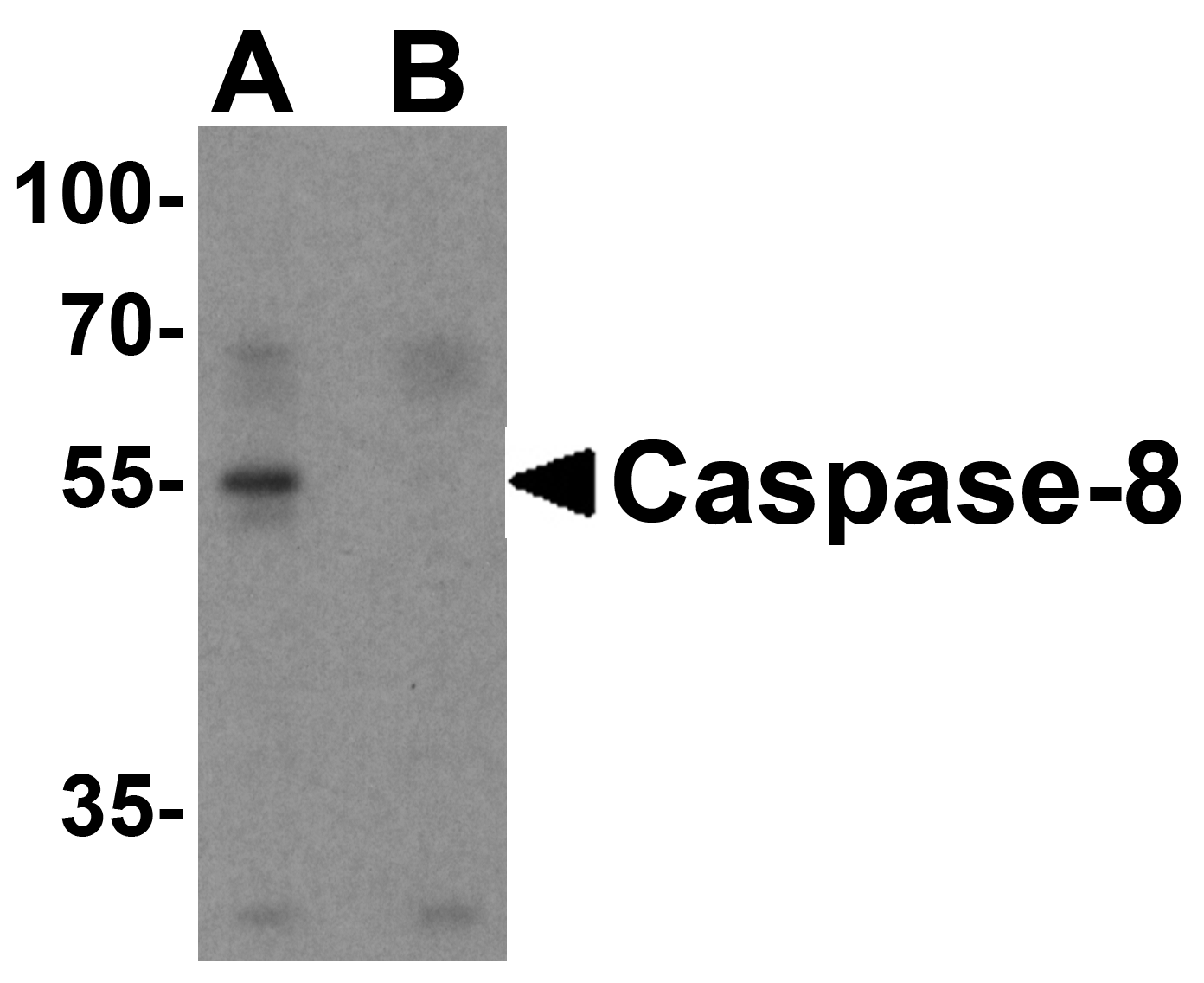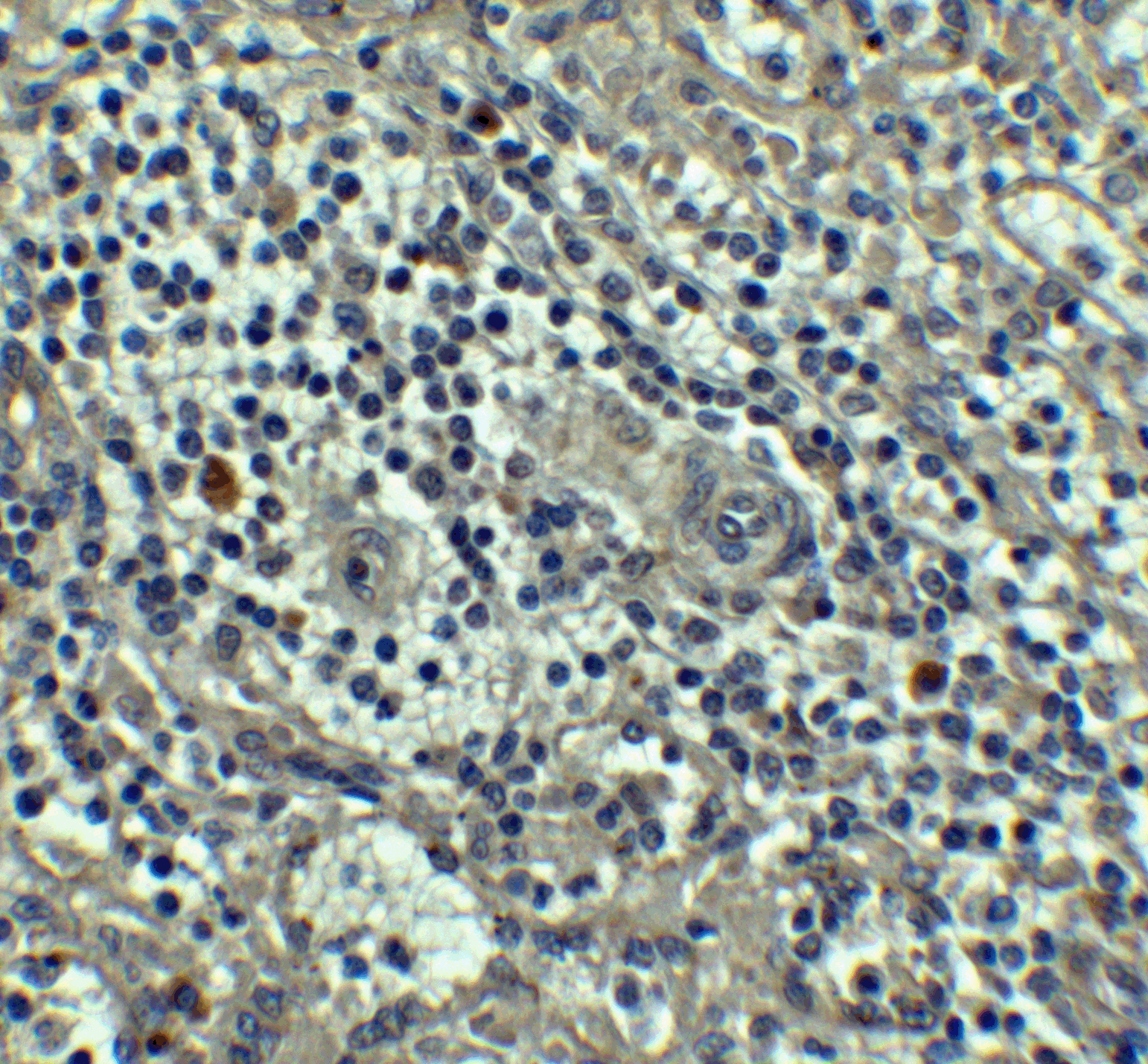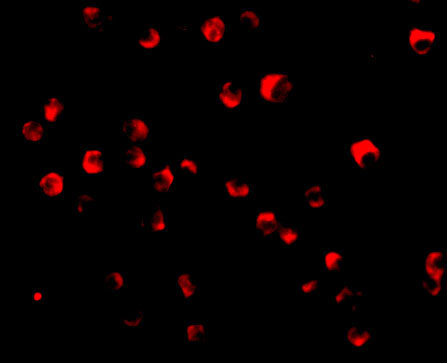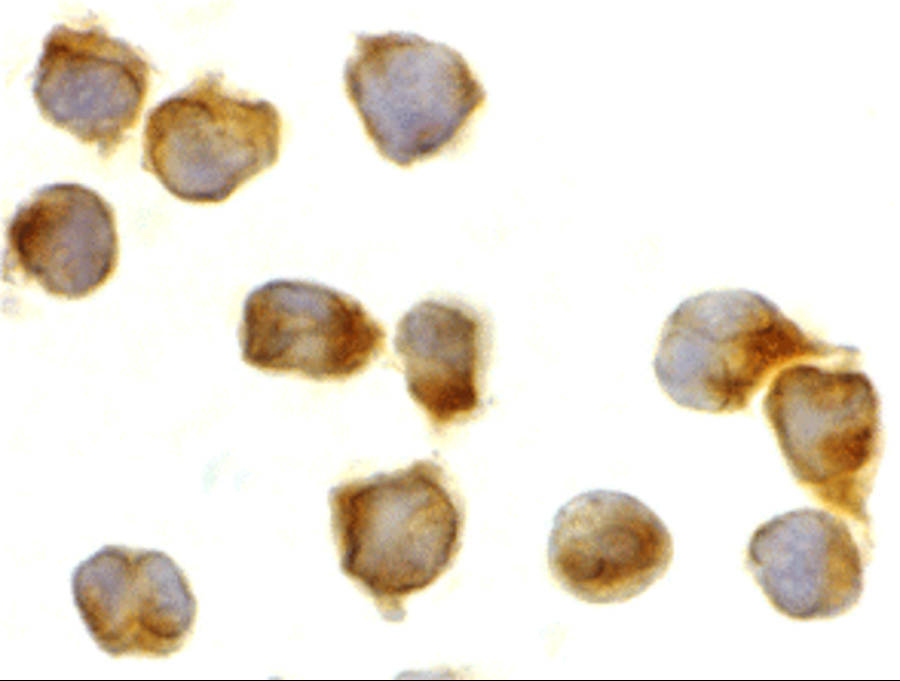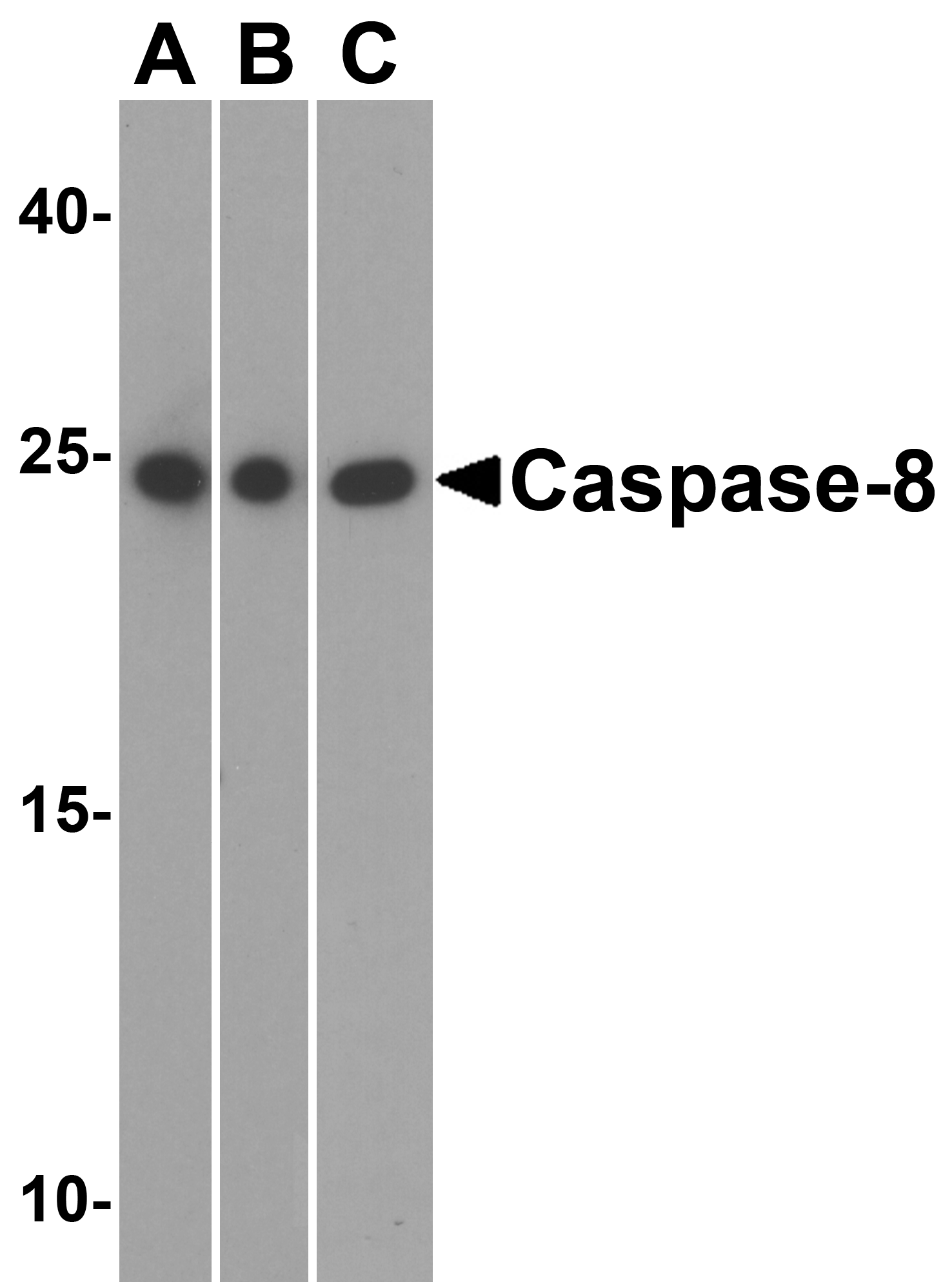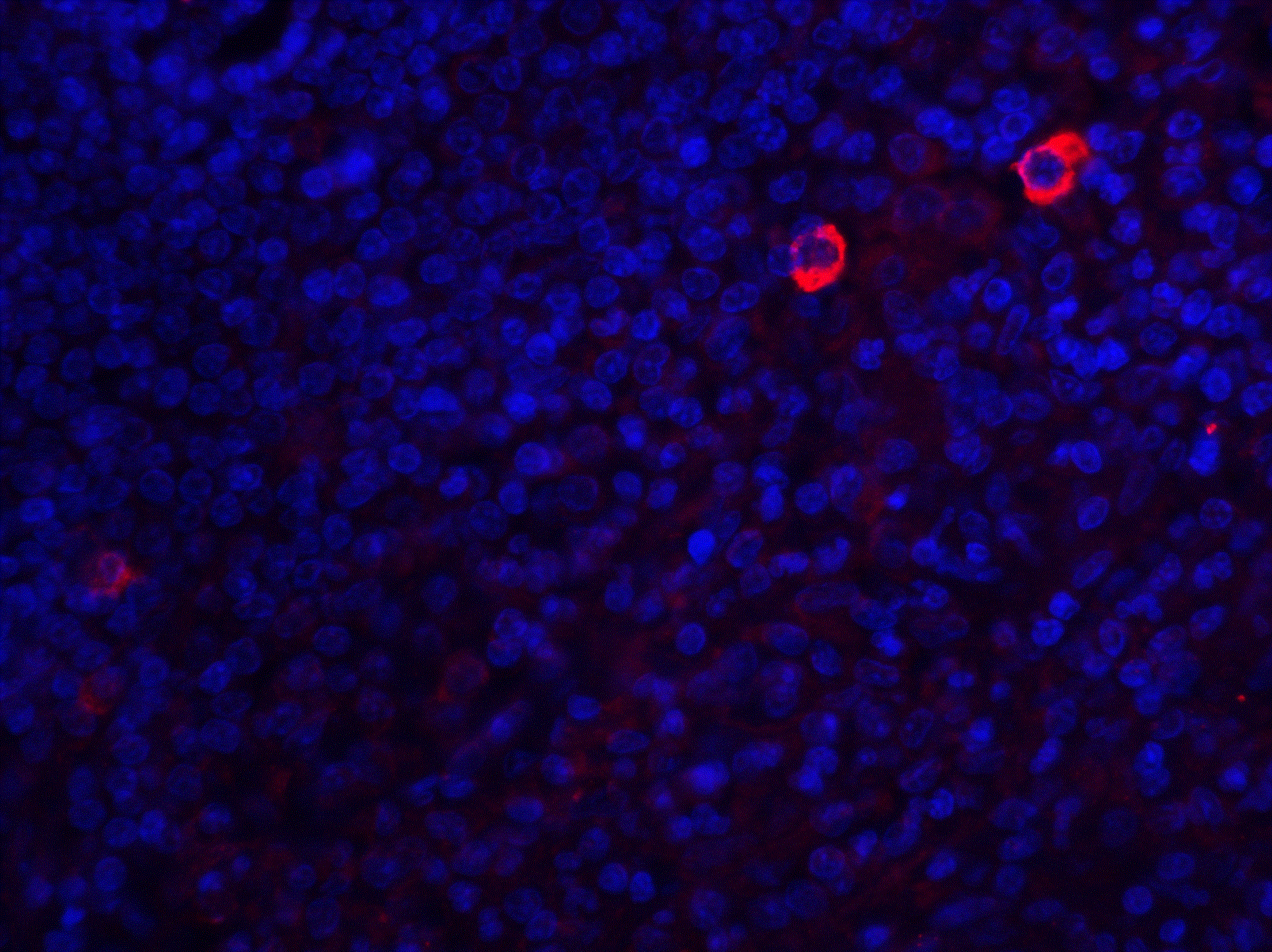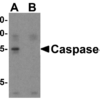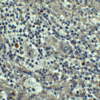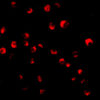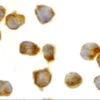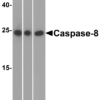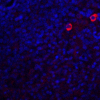Anti-Caspase-8 Antibody (11026)
$469.00
| Host | Quantity | Applications | Species Reactivity | Data Sheet | |
|---|---|---|---|---|---|
| Rabbit | 100ug | ELISA,WB,IHC-P,ICC,IF | Human, Mouse, Rat |  |
SKU: 11026
Categories: Antibody Products, Apoptosis Antibodies, Products
Overview
Product Name Anti-Caspase-8 Antibody (11026)
Description Anti-Caspase-8 Antibody Rabbit Polyclonal Antibody
Target Caspase-8
Species Reactivity Human, Mouse, Rat
Applications ELISA,WB,IHC-P,ICC,IF
Host Rabbit
Clonality Polyclonal
Isotype IgG
Immunogen Synthetic peptide corresponding to 16 amino acids at the C-terminus of human Caspase-8 isoform A (accession no. NP_001219).
Properties
Form Liquid
Concentration Lot Specific
Formulation PBS, pH 7.4.
Buffer Formulation Phosphate Buffered Saline
Buffer pH pH 7.4
Format Purified
Purification Purified by peptide immuno-affinity chromatography
Specificity Information
Specificity This antibody recognizes human, mouse, and rat Caspase-8 (18kDa).
Target Name Caspase-8
Target ID Caspase-8
Uniprot ID Q14790
Alternative Names CASP-8, EC 3.4.22.61, Apoptotic cysteine protease, Apoptotic protease Mch-5, CAP4, FADD-homologous ICE/ced-3-like protease, FADD-like ICE, FLICE, ICE-like apoptotic protease 5, MORT1-associated ced-3 homolog, MACH [Cleaved into: Caspase-8 subunit p18; Caspase-8 subunit p10]
Gene Name CASP8
Gene ID 841
Accession Number NP_001219
Sequence Location Cytoplasm, Nucleus
Biological Function Thiol protease that plays a key role in programmed cell death by acting as a molecular switch for apoptosis, necroptosis and pyroptosis, and is required to prevent tissue damage during embryonic development and adulthood (By similarity). Initiator protease that induces extrinsic apoptosis by mediating cleavage and activation of effector caspases responsible for the TNFRSF6/FAS mediated and TNFRSF1A induced cell death (PubMed:23516580, PubMed:8681376, PubMed:8681377, PubMed:9006941, PubMed:9184224, PubMed:8962078). Cleaves and activates effector caspases CASP3, CASP4, CASP6, CASP7, CASP9 and CASP10 (PubMed:8962078, PubMed:9006941). Binding to the adapter molecule FADD recruits it to either receptor TNFRSF6/FAS mediated or TNFRSF1A (PubMed:8681376, PubMed:8681377). The resulting aggregate called death-inducing signaling complex (DISC) performs CASP8 proteolytic activation (PubMed:9184224). The active dimeric enzyme is then liberated from the DISC and free to activate downstream apoptotic proteases (PubMed:9184224). Proteolytic fragments of the N-terminal propeptide (termed CAP3, CAP5 and CAP6) are likely retained in the DISC (PubMed:9184224). In addition to extrinsic apoptosis, also acts as a negative regulator of necroptosis: acts by cleaving RIPK1 at 'Asp-324', which is crucial to inhibit RIPK1 kinase activity, limiting TNF-induced apoptosis, necroptosis and inflammatory response (PubMed:31827280, PubMed:31827281). Also able to initiate pyroptosis by mediating cleavage and activation of gasdermin-D (GSDMD): GSDMD cleavage promoting release of the N-terminal moiety (Gasdermin-D, N-terminal) that binds to membranes and forms pores, triggering pyroptosis (By similarity). Initiates pyroptosis following inactivation of MAP3K7/TAK1 (By similarity). Also acts as a regulator of innate immunity by mediating cleavage and inactivation of N4BP1 downstream of TLR3 or TLR4, thereby promoting cytokine production (By similarity). May participate in the Granzyme B (GZMB) cell death pathways (PubMed:8755496). Cleaves PARP1 (PubMed:8681376). {UniProtKB:O89110, PubMed:23516580, PubMed:31827280, PubMed:31827281, PubMed:8681376, PubMed:8681377, PubMed:8755496, PubMed:8962078, PubMed:9006941, PubMed:9184224}.; [Isoform 5]: Lacks the catalytic site and may interfere with the pro-apoptotic activity of the complex. {PubMed:8681376}.; [Isoform 6]: Lacks the catalytic site and may interfere with the pro-apoptotic activity of the complex. {PubMed:8681376}.; [Isoform 7]: Lacks the catalytic site and may interfere with the pro-apoptotic activity of the complex (Probable). Acts as an inhibitor of the caspase cascade (PubMed:12010809). {PubMed:12010809, PubMed:8681376}.; [Isoform 8]: Lacks the catalytic site and may interfere with the pro-apoptotic activity of the complex. {PubMed:8681376}.
Research Areas Apoptosis
Background Caspases are a family of cysteine proteases. Caspase-8 is an initiator caspase that was identified as a member of the Fas/APO-1 death-inducing signaling complex. The adaptor molecule FADD couples procaspase-8 to the Fas receptor death domain; subsequent oligomerization promotes procaspase-8 autoactivation. FLIP, a catalytically inactive caspase-8-like molecule inhibits these interactions and thus can inhibit apoptosis.
Application Images







Description Western blot analysis of caspase-8 in Jurkat cell lysate with caspase-8 antibody at 1 ug/mL in (A) the absence and (B) the presence of blocking peptide.

Description Immunohistochemistry of Caspase-8 in human spleen tissue with Caspase-8 antibody at 5 ug/mL.

Description Immunofluorescence of Caspase-8 in Jurkat cells with Caspase-8 antibody at 20 ug/mL.

Description Immunocytochemistry of caspase-8 in Jurkat cells with caspase-8 antibody at 2 ug/mL.

Description Western blot analysis of Caspase-8 in (A) human spleen, (B) mouse spleen, and (C) rat spleen tissue lysate with Caspase-8 antibody at 0.5 ug/ml.

Description Immunofluorescence of Caspase-8 in human spleen tissue with Caspase-8 antibody at 20 ug/ml.
Red: Caspase-8 Antibody (11026)
Blue: DAPI staining
Blue: DAPI staining
Handling
Storage This antibody is stable for at least one (1) year at -20°C. Avoid multiple freeze-thaw cycles.
Dilution Instructions Dilute in PBS or medium which is identical to that used in the assay system.
Application Instructions Immunoblotting: use at 0.5-2ug/mL.
Positive control: Jurkat cell lysate.
Immunocytochemistry: use at 2ug/mL.
These are recommended concentrations.
Enduser should determine optimal concentrations for their applications.
Positive control: Jurkat cell lysate.
Immunocytochemistry: use at 2ug/mL.
These are recommended concentrations.
Enduser should determine optimal concentrations for their applications.
References & Data Sheet
Data Sheet  Download PDF Data Sheet
Download PDF Data Sheet
 Download PDF Data Sheet
Download PDF Data Sheet

